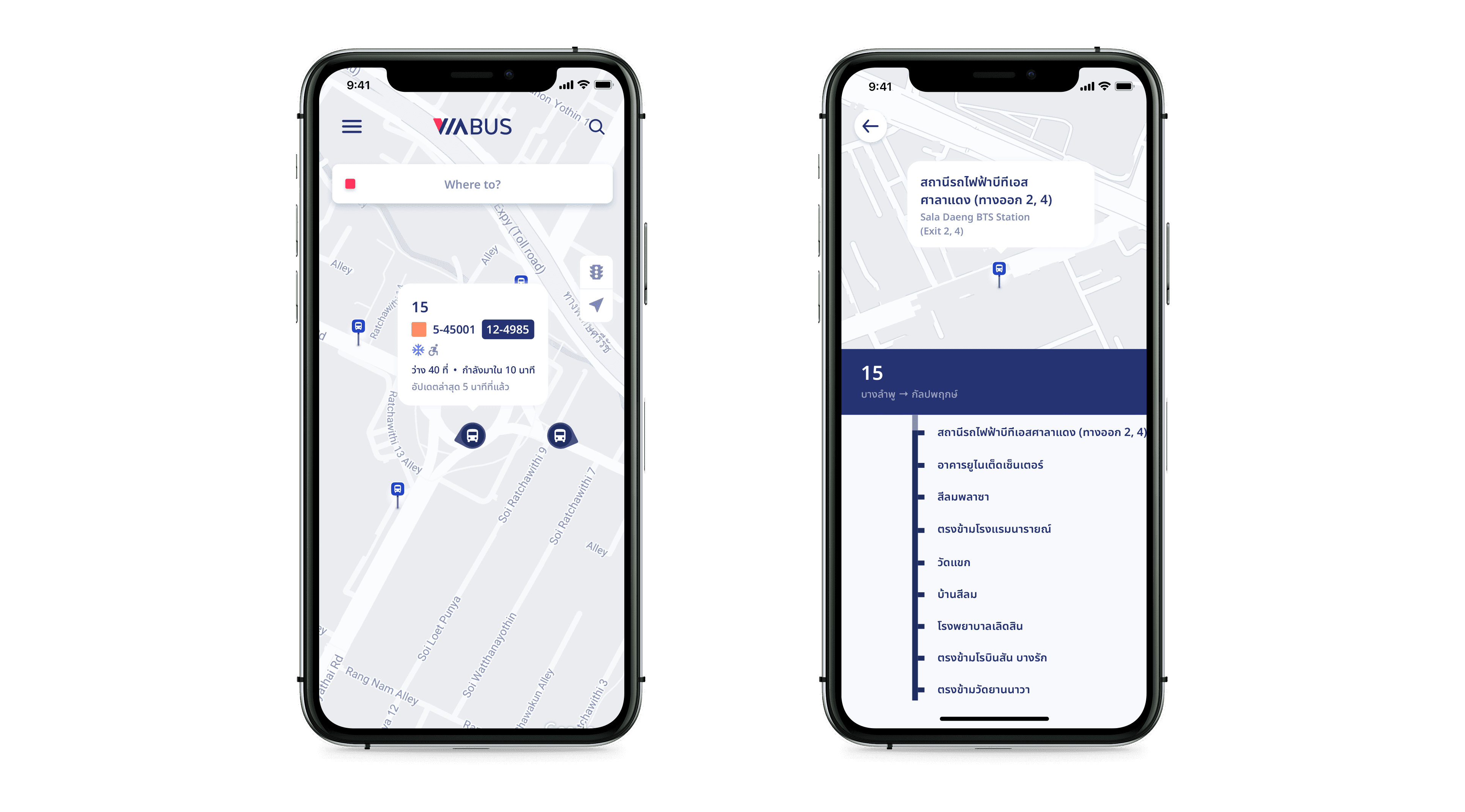ViaAdmin
Work
Case Study
UX Design
UI Design
Year
2019–2020
Overview
ViaAdmin is a comprehensive public transport management platform that provides detailed information about public transportation systems. It also enables the efficient management of data for ViaBus usage and serves as the core system powering electronic guide signs at bus stops and ports throughout Bangkok.
Background
This feature focuses on managing the fares across various public transport systems, ensuring coverage for all potential scenarios, whether for buses, boats, electric trains, or nationwide rail services.
Field Research
The research will focus on understanding the behavior of both admin users and passengers who interact with the fare information in the application. This will involve conducting surveys while riding buses around Bangkok, analyzing the fare structure, observing staff behavior, and taking trains and boats. Additionally, interviews will be conducted with staff and users to gain insights into their daily travel routes and experiences.
Research from Habits
Research into user behavior and habits aims to streamline data entry, making it faster and more intuitive. Inspired by the traditional fare table used by bus conductors for fare collection, this concept has been modernized into a digital format, incorporating calculation tools to enhance pricing accuracy and efficiency.
Wireframing and Designs
The dashboard is divided into two main sections, with a 70:30 ratio. The larger section displays a price table, serving as the workspace for entering fares. On the right, a control panel offers tools for calculating prices based on predefined formulas, autofilling fields, and selecting saved presets, making it easier to apply consistent pricing across bus lines with similar fare structures.
Components
The controller design simplifies price entry by automatically calculating fares based on factors like distance rates, intersection pricing, or additional conditions such as expressway or airport shuttle fees. Users can easily input formulas and generate tables without manually filling in each field, optimizing the process and reducing errors.
Reflects
This feature enhances user understanding by observing behaviors and integrating existing data, ultimately improving the quality of life for users and reducing time spent on manual data entry. It also considers various journey scenarios, enabling the system to scale effortlessly without requiring future modifications or additional research.




